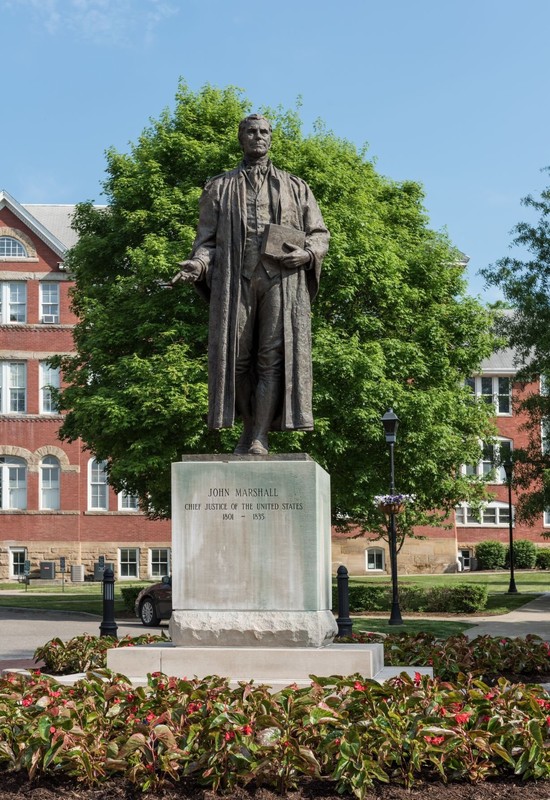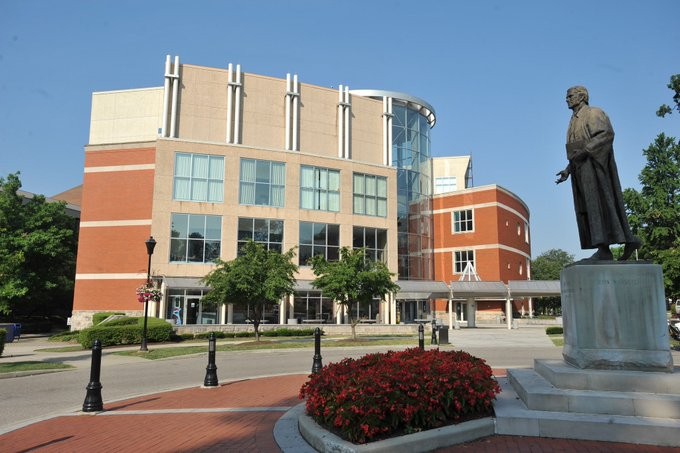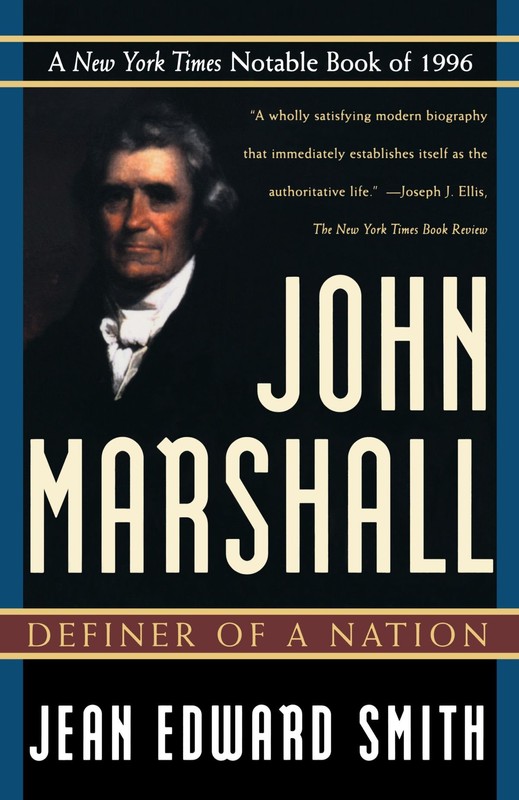Statue of John Marshall at Marshall University
Introduction
Author-Uploaded Audio
Patricia Proctor discusses the legacy of John Marshall.
Text-to-speech Audio
Images
The base of the sculpture is engraved with the words "Revolutionary Soldier. Definer of the Constitution. Devoted husband and father." Image obtained from the Library of Congress.

This $118,000 statue is made of bronze and created by sculptor William Behrends of Tyron, North Carolina. The statue was dedicated on October 23, 1998.

Learn more about Marshall with this biography by historian Jean Edward Smith.

Backstory and Context
Author-Uploaded Audio
Dr. Alan Gould recalls his project to create the John Marshall Statue.
Text-to-speech Audio
John Marshall was born in Virginia in 1755. He enlisted as a soldier during the Revolutionary War and eventually served as an officer under George Washington. During the war he fought in the Battles of Great Bridge, Brandywine, and Germantown, and wintered with the Continentl Army at Valley Forge in 1777-1778. After leaving the military in 1780 Marshall studied law and became a lawyer. He also served in a number of government positions such as a member of the Virginia House of Delegates, a magistrate for the Richmond Hustings Courts, a diplomat to France, and Secretary of State. In 1801 President John Adams appointed Marshall to the Supreme Court, where he became its fourth Chief Justice. Marshall served in the court until his death in 1835, the longest tenure of any Chief Justice in history. During his career in the Supreme Court, Marshall heard over 1,000 cases and wrote 519 decisions.
John Marshall is widely regarded as being the most influential Chief Justice in American history; his actions asserted the authority of the Supreme Court, defined the limitations of each branch of government, and provided key precedents for how the Constitution was to be interpreted. Several of his most important court cases, including Marbury v. Madison (1803), McColluch v. Maryland (1819), Cohens v. Virginia (1821) and Gibbens v. Ogden (1824) became landmark decisions that definitively outlined the powers of the federal government. Marbury v. Madison for example established the principle of judicial overview, giving the Supreme Court the ability to overrule acts that violated the Constitution; and McColluch v. Maryland determined that the Constitution and federal laws supersede state laws. John Marshall was also said to be an advocate for Native American rights; the Supreme Court decision in Worcester v. Georgia (1832) determined that the Cherokee Nation was sovereign, although it ultimately failed to prevent the forced expulsion of Cherokee to Oklahoma. Marshall’s views on slavery meanwhile are mixed. While some sources claim that the justice was opposed to slavery, others point out that he owned, bought, and sold hundreds of slaves over the course of his life.
John Marshall became the namesake for the new Marshall Academy established in Guyandotte (present-day Huntington) in 1837. One of its founders, attorney John Laidley, had been an acquaintance of the Chief Justice. Marshall Academy eventually evolved into Marshall University, and over the years it has paid homage to John Marshall in a number of ways. In the late 1990s plans were proposed by the John Deaver Drinko Academy, an organization dedicated to promoting civic culture at the university, to erect a statue of Marshall beside the new Drinko Library.
North Carolina-based sculptor William Behrends was commissioned to create an eight-foot bronze sculpture of John Marshall perched atop a six-foot tall pedestal. Engraved on the pedestal are the words “Revolutionary soldier. Definer of the Constitution. Devoted husband and father.” The monument altogether cost $118,000. It was formally dedicated in a ceremony on October 23, 1998, the day before the grand opening of the Drinko Library. Remarks were delivered by Chief Joe Byrd of the Cherokee Nation and noted biographer Dr. Jean Edward Smith; the statue itself was unveiled by Andrew Marshall Schiff, a direct descendant of John Marshall
Sources
“Chief Justice John Marshall’s Legacy.” Landmark Cases of the Supreme Court. Accessed July 22, 2019. https://www.landmarkcases.org/gibbons-v-ogden/chief-justice-john-marshalls-legacy.
Dickinson, Jack. “A Guide to Marshall University Landmarks.” Huntington, WV: Marshall University Libraries, 2014. Accessed July 22, 2019. https://mds.marshall.edu/lib_manu/3/.
The Federalist Society. “John Marshall: The Man Who Made the Supreme Court [POLICYbrief]” (video). Posted April 11, 2019. Accessed July 22, 2019. https://www.youtube.com/watch?v=aqyoI7lmy-0.
Finkelman, Paul. Supreme Injustice: Slavery in the Nation's Highest Court. Harvard University Press, 2018.
Fox, John. “John Marshall.” PBS. Accessed July 22, 2019. https://www.thirteen.org/wnet/supremecourt/democracy/robes_marshall.html.
Gould, Alan. “The John Marshall Statue.” Alan Gould Papers, Marshall University.
Gould, Alan. Interview by Steven Cody Straley. Huntington, WV. November 8, 2018.
Highsmith, Carol M, photographer. Statue of U.S. Supreme Court Chief Justice John Marshall in a plaza at Marshall University, which takes the famed jurist's name. Huntington, West Virginia. Huntington United States West Virginia, 2015. -05-07. Photograph. https://www.loc.gov/item/2015631804/.
“John Marshall.” Biography.com. April 17, 2019. Accessed July 22, 2019. https://www.biography.com/political-figure/john-marshall.
MarshallU. "Jean Edward Smith lecture abut John Marshall" (video). Posted September 8, 2011. Accessed January 28, 2020. https://www.youtube.com/watch?v=jh0jCAOaXtE.
MarshallU. "Marshall University: Celebrating John Marshall" (video). Posted September 29, 2009. Accessed January 28, 2020. https://www.youtube.com/watch?v=kaayf5pqYNU.
“Marshall University Official History.” Marshall University. Accessed July 22, 2019. https://www.marshall.edu/muhistory/.
“The Marshall Court, 1801-1835.” The Supreme Court Historical Society. Accessed July 22, 2019. https://supremecourthistory.org/timeline_court_marshall.html.
Smith, Jean Edward. “John Marshall and the University.” Address given at the John Marshall Statue Dedication, Huntington, WV, October 23, 1998.
Smith, Jean Edward. John Marshall: Definer of a Nation. New York: H. Holt & Co., 1996.
Unger, Harlow Giles. John Marshall: The Chief Justice Who Saved the Nation. Boston, MA: Da Capo Press, 2016.
Library of Congress
Marshal University Information Technology
Amazon.com
